

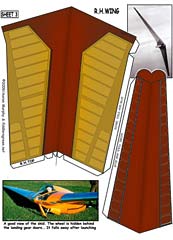
Horten Ho-IV Flying Wing High Performance Sailplane

Flight tests showed that the Ho-IV was fully controllable
although no one described it as easy to manage in the air.
Center of gravity placement, as usual with tailless aircraft, had to be precise. This model, if carefully built, flies better as a kite than as a glider. Add a 24 inch ribbon tail for the kite version.
This is the Horten Ho-IV model that won the FG Modeling Madness (FGMM) 2010 best in class prize. Thanks to Péricles Lopes Gomide Filho for his entry !! |
|
 |
 |

I am in the middle of building this interesting and beautiful "rara avis". Thanks for the well-designed model and the introduction to another aeronautical wonder. BTW, I think the Horten glider at the National Air and Space Museum is an earlier Ho-III, not this one. Rob T
Hello again Chip, The 38inch HO 4 model really does fly...WOW. It took some trail and error and some back flips that dented the canopy. But finally eight 4-40 nuts taped under the nose gave a good glide. Very neat that this model can fly for real. Thanks Chip for having a lot of really cool models , Chris
Horten Ho-IV

The Horten Ho-IV Flying Wing High Performance Glider
The Horten Ho-IV Flying Wing was developed for long distance soaring and attained a very high performance level after extensive flight trials totaling over 1000 hours
|
With the outbreak of world war II in 1939, the outlook for flying wing development improved immeasurably. on both sides of the Atlantic, governments were more than willing to gamble funds and manpower in a search for the right combination of weapons and aircraft that could mean the difference between victory and defeat in the air war ahead.
Most of the governments that were at war took a few tentative steps in the direction of tailless fighters, but only one aircraft of the type, The Lippisch-designed Me 163 became the world's first operational tailless fighter and was used in combat.
In the United States, only Jack Northrop worked vigorously to build a flying wing, but it was not until a year after the war that the first of his giant aircraft made its maiden flight.
In Germany, despite the pressures of war, the Horten brothers continued to create a series of imaginative flying wing designs that culminated in the world's first turbojet-powered flying wing.
Following their success with the prewar Ho III series, the Hortens designed and built the first model officially sponsored by the German government. With the Ho IV (1941), the Horten brothers doubled the aspect ratio of the Ho-III to about 22:l. The glider featured a plywood-covered steel tube inner section containing the cockpit, in which the pilot assumed a semi-prone position to reduce drag as much as possible. This "praying mantis" position, in which the upper part of the pilot's body was horizontally inclined 30 degrees, was restful on long test flights, one of which exceeded nine hours.
The glider featured a plywood-covered steel tube inner section containing the cockpit, in which the pilot assumed a semi-prone position to reduce drag as much as possible. This "praying mantis" position, in which the upper part of the pilot's body was horizontally inclined 30 degrees, was restful on long test flights, one of which exceeded nine hours.
The wings were made of wood with fabric covering except for the outer six feet, which were made of aluminum. Using a retractable type of skid landing gear, the Ho IV took off on a wheel attached to a wooden skid. After takeoff, the wheel dropped automatically when the skid was retracted. There were no vertical surfaces on the wing, and a complex control system was employed, consisting of dive brakes that moved out at right angles to the wing surface, drag rudders, and three elevons along each trailing edge.
A variant of this aircraft was the Ho-IVB, which incorporated a laminar flow airfoil with a plastic leading edge. The airfoil section was based on data obtained from wind tunnel tests of a captured p-51 Mustang fighter. Unfortunately the Ho-IVB suffered from bad stalling characteristics and eventually crashed after a spin, killing the pilot.
One of the Horten IVs survived in Germany and was flown by the British Air Force until damaged seriously in a landing accident at Scharfoldendorf. The wing tips had been at some time replaced with wooden tips. A Horten IV was extensively flown in the USA in post war times and was the subject of a thorough study at the Mississippi State University in 1959. The results were not as good as expected. In recent years, one of the surviving Horten IVs, probably the one used by the British in 1946 - 48, has been completely restored at the Oberschleissheim division of the Deutsches Museum in Munich.(see right). This version is included in the folder as LARGE.
Other Horten Flying Wing models are: Horten Ho-229 (jet powered!) and the Horten Ho-IX Glider
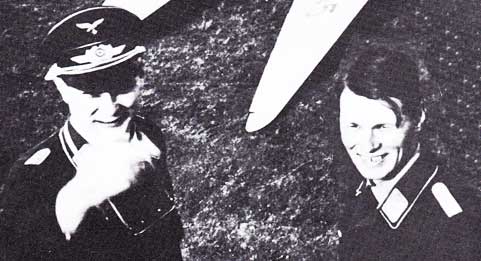 After the war, the Horten brothers continued to design tailless aircraft, producing both sailplanes and powered aircraft. One died in Argentina and the other in his native Germany. |
 Your Ho-IV comes with cutouts of the Horten Brothers created by the cartoonist Derek Carter. |
 The Ho-IV pilot's head clearance was very close and probably very hot while in flight. |
 The HO-IV's center section was completely welded steel tubing for maximum strength during a crash. |
 This is the only photo of the Ho-IV with Nazi markings |
 To keep profile drag to a minimum, the pilot had to fly the Ho-IV in the prone position. |
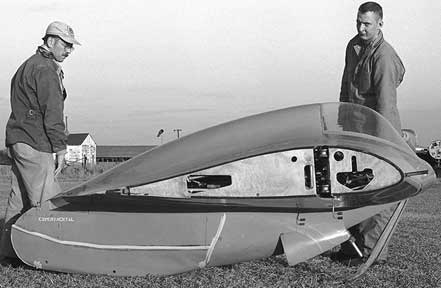 The Ho-IV's center section shown here was perfectly streamlined. |
 |
 This colorful version is included in the Ho-IV folder |
 With a Jumbo or Super clip, you'll never have a wonky wing trailing edge again. |
 The trick to get the proper contour is to simple hold the canopy and the fuselage pod firmly until the glue sets. |
 |
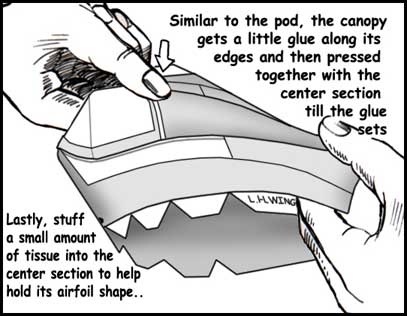 |
 The Horten Ho-IV takes on surprisingly more dihedral while in flight. |
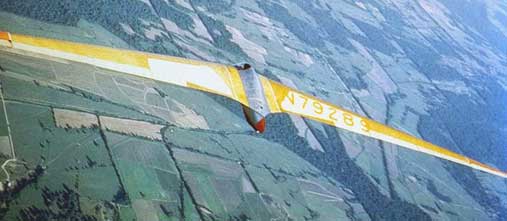 This Ho-IV has markings matching the model included in the folder |
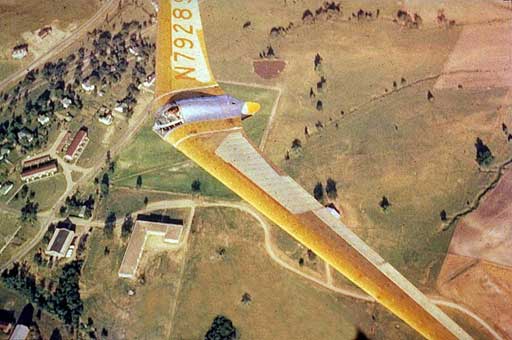 The Horten Ho-IV must have been a thrill to see flying overhead |
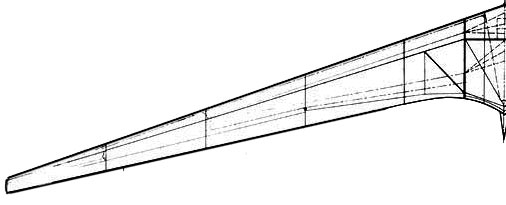 This is a diagram of the wing cable system on the Horten Ho-IV |
 The Ho-IV cover is easily jettisoned if needed |
|
 |
Specifications for the Horten Ho-IV
 |
Length: 12 ft 6 in Wingspan: 66 ft 7 in Airfoil: 21.8 Empty weight: 541 lb Loaded weight: 768 lb Minimum sink rate: 1.8 ft/sec at 34.2mph Best glide ratio: 32 at 45.3mph Performance Maximum speed: 124 mph |






